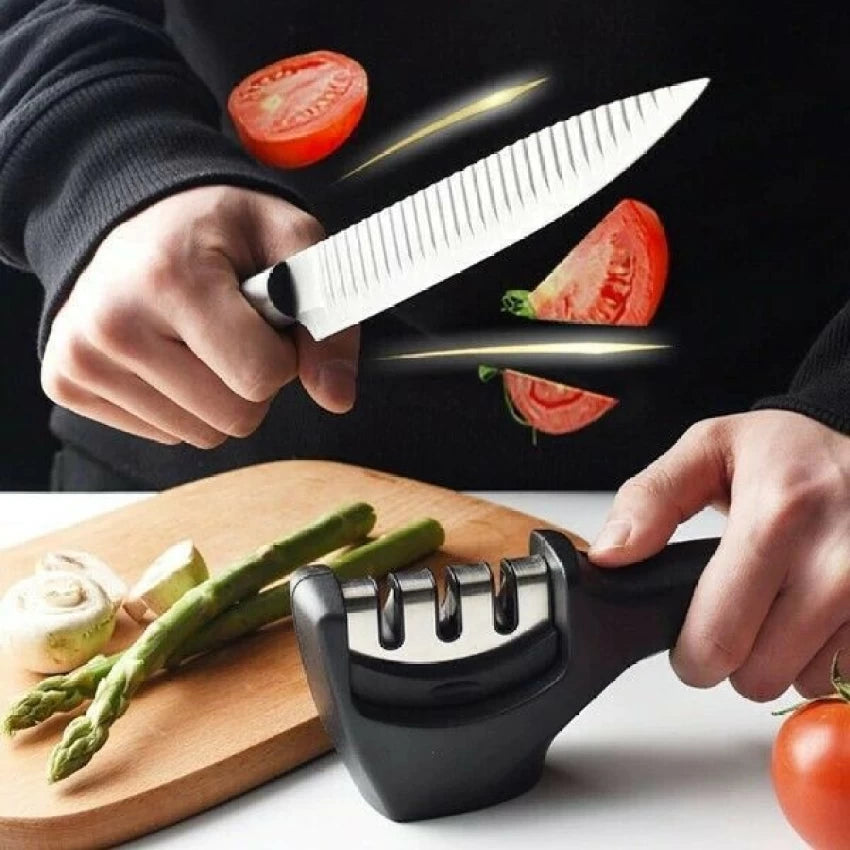Introduction
Ceramic knives, known for their exceptional sharpness and durability, are a staple in modern kitchens. However, even the best knives lose their edge over time, and ceramic knives are no exception.
Unlike traditional steel knives, ceramic blades require specific care to maintain their razor-sharp edge. In this guide, we'll walk you through the process of sharpening your ceramic knife, ensuring it remains a reliable tool in your culinary arsenal.
Understanding Ceramic Knives
Ceramic knives are crafted from zirconium dioxide, a material known for its hardness, second only to diamonds. This composition allows ceramic knives to maintain their sharpness up to ten times longer than steel blades. They are also resistant to rust, lightweight, and non-reactive, making them an ideal choice for precise cutting tasks.
However, the hardness of ceramic also means they can be brittle. This characteristic necessitates the use of specific sharpening tools and techniques to avoid chipping.
When to Sharpen Your Ceramic Knife
Knowing when to sharpen your ceramic knife is crucial. The most apparent sign is a decreased performance in cutting. If you notice your knife struggling with tasks it used to handle with ease, like slicing through tomatoes or other soft foods, it's time to sharpen.
Typically, with regular use, a ceramic knife may require sharpening once a year. However, this frequency can vary based on how often the knife is used and the tasks it performs.
Choosing the Right Sharpening Tools
For sharpening ceramic knives, we recommend using a diamond-dust sharpener. Diamond sharpeners are effective due to their extreme hardness, which is necessary to grind the ceramic blade efficiently. Avoid using traditional steel sharpeners or honing rods, as they can damage the delicate ceramic edge.
Step-by-Step Sharpening Guide
-
Preparation: Secure your knife and sharpener on a flat, stable surface. Ensure your working area is well-lit and wear cut-resistant gloves for safety.
-
Sharpening Process:
- Hold the knife at a 20-degree angle to the sharpener.
- Gently pull the knife through the sharpener from the base of the blade to the tip. Apply light, consistent pressure.
- Repeat this process approximately 5-10 times on each side of the blade.
- Check the sharpness of your knife. If necessary, repeat the process until the desired sharpness is achieved.
-
Post-Sharpening Care: Clean the knife with a soft, damp cloth and dry immediately. Store the knife in a safe place, preferably in a knife block or sheath to protect the edge.
Professional Sharpening Services
If you're uncomfortable sharpening your ceramic knife yourself or if the blade is chipped, consider professional sharpening services. Professionals have the expertise and equipment to restore your knife's edge without compromising its integrity.
Conclusion
Regular maintenance, including proper sharpening, ensures your ceramic knife continues to perform at its best. By following these guidelines, you can extend the life of your knife and enjoy the precision cutting experience it offers.
Visit our website to explore our range of high-quality ceramic knives.
For any queries or assistance, our customer service team is always ready to help.

